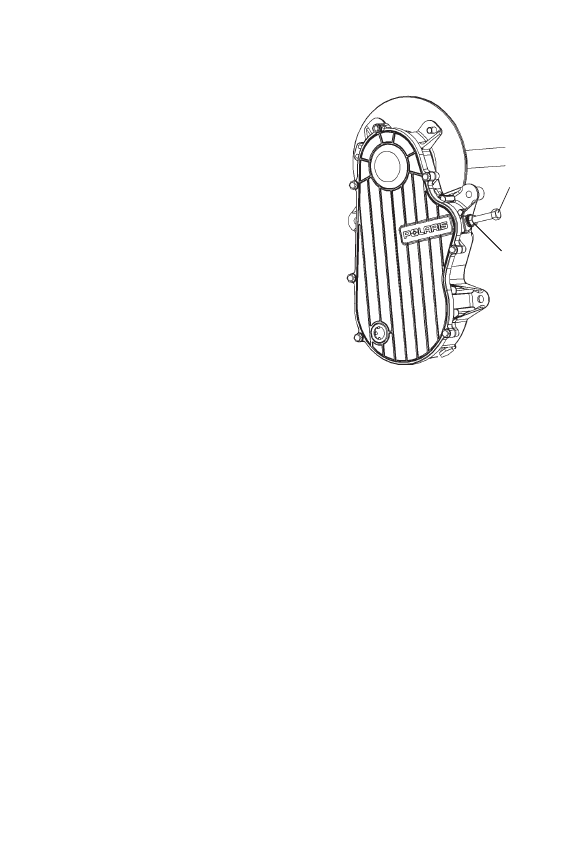Snowmobile Polaris 600 IQ LXT (2015 year). Manual - part 24

99
MAINTENANCE
Drive Chain Tension
Check drive chain tension weekly and
before each long trip. To obtain correct
chain tension:
1. Rotate the driven clutch counter-
clockwise to move all chain slack to
the tensioner side. Lock the brake
lever lock, or have an assistant hold
the brake lever firmly.
2. Loosen the adjuster bolt jam nut (1).
3. Finger tighten the adjuster bolt (2)
until it can no longer be adjusted by
hand, then back off 1/4 turn.
4. Tighten the jam nut while holding
the adjuster bolt. Torque to 21 ft.
lbs. (28 Nm).
5. Release the brake lever lock.
1
2